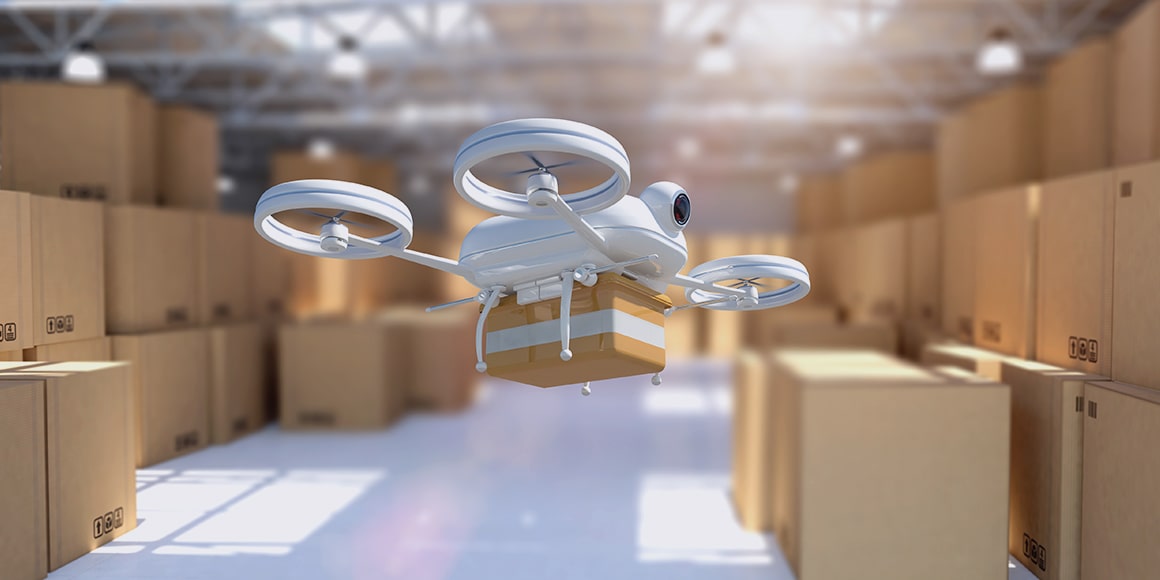
In today’s accelerated e-commerce market, agility is essential to building a strong logistics program. That’s why decentralized shipping models—which put goods closer to the end buyer and allow for faster, more seamless order fulfillment—have taken hold.
But decentralized logistics isn’t one-size-fits-all. Many retailers have turned to responsive models that offer customers a blend of online and in-store interactions. These models introduce logistical flexibility while helping both parties save on shipping costs and, in many cases, delivering orders to customers sooner.
With these adaptable models, businesses can navigate around the challenges of retail logistics to build a more agile fulfillment strategy.
Explore responsive logistics models.
Customer experience is the lifeblood of a modern e-commerce business. Retailers have very little, if any, margin for error in attracting and keeping the attention of today’s consumer. Based on business priorities, logistics infrastructure and consumer preferences, a company can adapt a logistics program to ensure it delivers the best-fitting experience for customers.
Below, find learnings—from the percentage of businesses offering these programs to the frequency of customers using them—on 12 different responsive logistics models, all gathered from a Forrester Consulting research study commissioned by USPS.[1]
Buy online,
pick up in store
(BOPIS)
Rate of Adoption: 89% currently offer or plan to offer
Frequency of Customer Use: 43% of businesses see most of their customers using this service
Buy online,
ship to store,
pick up in store
Rate of Adoption: 87% currently offer or plan to offer
Frequency of Customer Use: 38% of businesses see most of their customers using this service
Buy online,
return to store
Rate of Adoption: 86% currently offer or plan to offer
Frequency of Customer Use: 35% of businesses see most of their customers using this service
Buy online,
ship to home
Rate of Adoption: 87% currently offer or plan to offer
Frequency of Customer Use: 53% of businesses see most of their customers using this service
Reserve online,
pick up and pay
in store
Rate of Adoption: 84% currently offer or plan to offer
Frequency of Customer Use: 42% of businesses see most of their customers using this service
Buy in store or online, pick up at a third‑party location (e.g., locker)
Rate of Adoption: 74% currently offer or plan to offer
Frequency of Customer Use: 46% of businesses see most of their customers using this service
Buy in store,
ship to store,
pick up in store
Rate of Adoption: 90% currently offer or plan to offer
Frequency of Customer Use: 33% of businesses see most of their customers using this service
Browse online,
purchase
in store
Rate of Adoption: 85% currently offer or plan to offer
Frequency of Customer Use: 43% of businesses see most of their customers using this service
After-hours
pick up
Rate of Adoption: 71% currently offer or plan to offer
Frequency of Customer Use: 45% of businesses see most of their customers using this service
Buy in store,
ship to home
Rate of Adoption: 81% currently offer or plan to offer
Frequency of Customer Use: 46% of businesses see most of their customers using this service
Next-day
delivery
Rate of Adoption: 85% currently offer or plan to offer
Frequency of Customer Use: 45% of businesses see most of their customers using this service
Same-day
delivery
Rate of Adoption: 81% currently offer or plan to offer
Frequency of Customer Use: 41% of businesses see most of their customers using this service
Key Takeaway
Different businesses face different challenges when implementing decentralized logistics programs. The array of adaptable fulfillment models can help you find a blueprint that caters to your retail business.
Weigh the specific demands and behaviors of your customers against this industry research, then consider the strengths and limitations of your business model. With these insights, you’ll be able to find a responsive program that maximizes your strengths and delivers the best overall experience for your customers.
For a more in-depth look at different shipping and logistics programs, start exploring our interactive decentralized shipping tool, where you can enter your specific business goals to find a model that works for you.Footnotes
keyboard_arrow_down- [1]Forrester Consulting survey of 317 U.S. decision-makers in e-commerce, marketing and supply chain with authority around logistics, fulfillment and marketing. Commissioned by USPS, April 2020. arrow_right_alt
 search
close
menu
search
close
menu



